Ever walked into your kitchen or bathroom only to find water dripping from a pipe you thought was fine? It’s frustrating that one small leak can turn into a big, expensive mess before you even realize what’s happening. You’ve probably tried a few quick fixes that didn’t last, leaving you wondering what is the best sealant for leaking pipes is that actually works.
In this post, we’ll make it simple. You’ll learn exactly which sealants work best for different types of leaks, how to use them correctly, and what to avoid if you want a lasting repair. Whether you’re tackling a small drip or a stubborn joint leak, this guide will help you pick the right product and stop the leak for good.
How To Choose the Best Pipe Sealant for Repairing Leaks
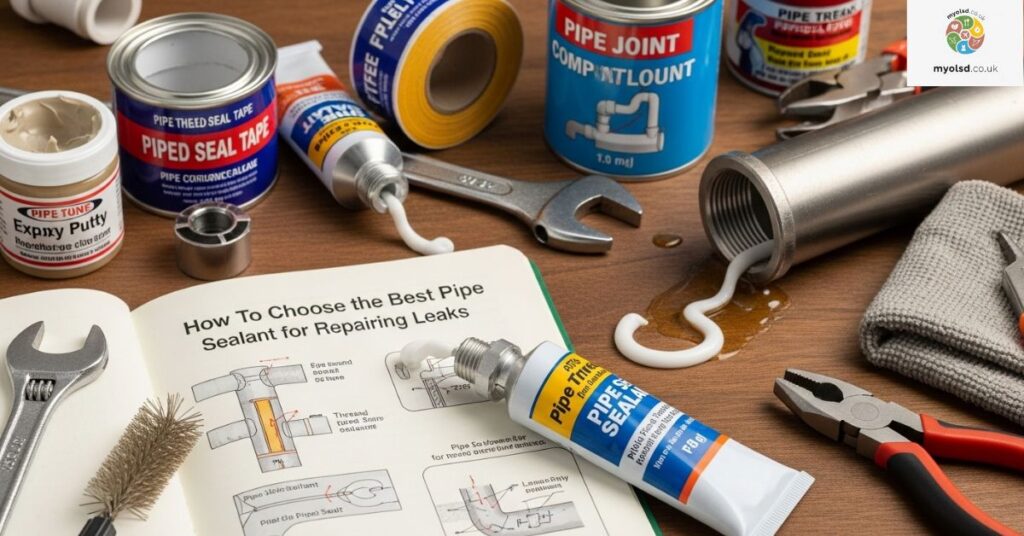
When a pipe starts leaking, the first thought that comes to mind is how to stop it fast. But before you grab any sealant, it’s crucial to understand what kind of leak you’re dealing with and the material of your pipe. Each situation needs a different fix; what works for PVC may not suit copper or steel.
The best sealant for leaking pipes depends on three key factors: leak size, pipe type, and pressure level. Let’s go step by step to make your choice simple and smart.
What Kind of Leak Is It?
Leaks can range from a small drip to a full burst. Knowing the type helps you choose the right repair method and sealant strength.
Pinhole Leak
A pinhole leak is a tiny hole, often caused by corrosion or wear. In this case, epoxy putty or silicone sealant usually works best. Products like J-B Weld SteelStik can create a watertight seal that lasts, especially for metal pipes.
Moderate Leak
Moderate leaks often appear at joints or fittings. A pipe repair tape or pipe thread sealant can be effective here. These are flexible and hold up well under moderate pressure.
Gushing Leak
If water is spraying out forcefully, that’s a gushing leak, often due to high pressure or structural damage. A temporary fix, like a rubber patch or self-fusing silicone tape, can help contain it until a professional plumber repairs or replaces the section.
What Is the Pipe’s Material?
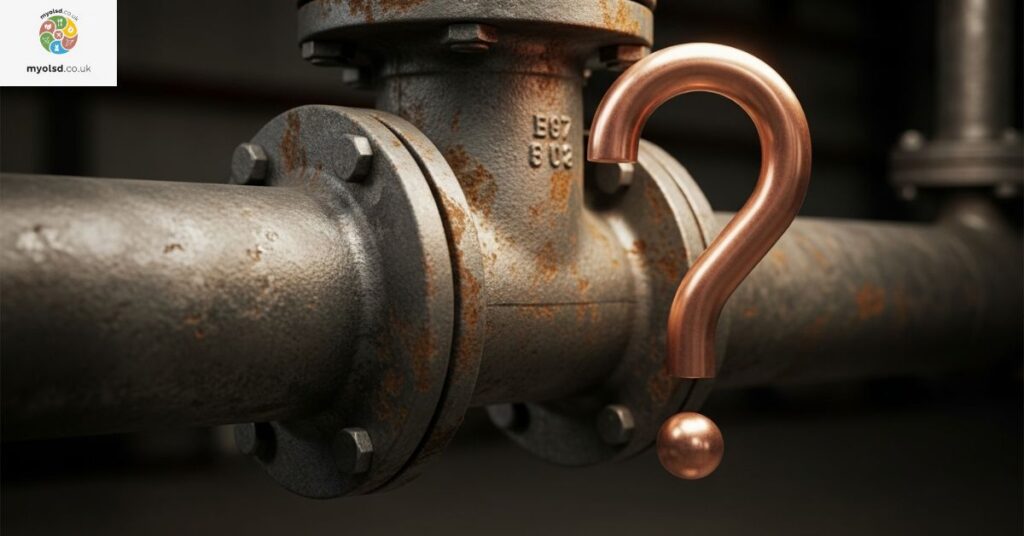
Not all sealants work with every material. Choosing a sealant that matches your pipe type prevents further issues like rust or weak bonding.
PVC
For PVC pipes, use PVC cement, waterproof sealant, or epoxy putty designed for plastic. They bond chemically and create a durable, watertight seal. Avoid metal-based compounds on PVC as they might crack the surface.
Copper
Copper pipes need epoxy putty or pipe thread sealant that resists heat and corrosion. Since copper expands slightly with temperature, a flexible sealant ensures long-term stability.
How Pressurized Is the Pipe?
Pressure plays a huge role in leak repair success. High-pressure pipes need strong adhesives with excellent pressure resistance.
For low-pressure pipes, simple PTFE (Teflon) tape or thread sealant can handle the job.
For high-pressure systems, an industrial-grade epoxy compound or silicone sealant works better, offering a permanent fix that withstands heavy water flow and vibration.
Our Top 4 Picks for the Best Sealants for Leaking Pipes
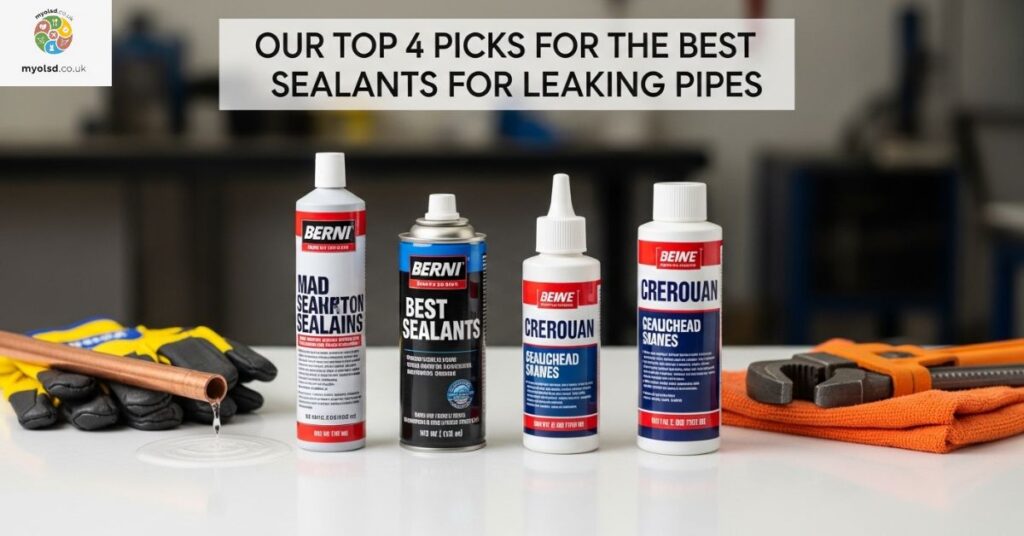
Choosing the right product saves time, money, and frustration. Here are our top picks trusted by homeowners and plumbers alike.
1. J-B Weld SteelStik – Premium Epoxy Putty
This two-part compound is excellent for metal, PVC, and copper pipes. It forms a durable bond and can handle high-pressure leaks. It cures quickly and offers a permanent waterproof repair.
2. Dixon Valve PTFE Industrial Sealant Tape
This Teflon tape is perfect for sealing threaded joints. It’s chemical-resistant and works on a wide range of materials. Ideal for DIY plumbing repairs and quick fixes.
3. Rectorseal T Plus 2 Pipe Thread Sealant
This product provides a tight, leakproof seal for both hot and cold water systems. It’s easy to apply, resists corrosion, and is suitable for metal and plastic fittings.
4. Proxicast Pro-Grade Self-Fusing Silicone Rubber Sealing Tape
A flexible sealant tape that’s perfect for temporary repairs or outdoor leaks. It bonds to itself without adhesives, forming a strong, watertight wrap in seconds.
Read more Article: Best Time to Cruise Mexican Riviera
Final Notes on Choosing the Right Pipe Sealant
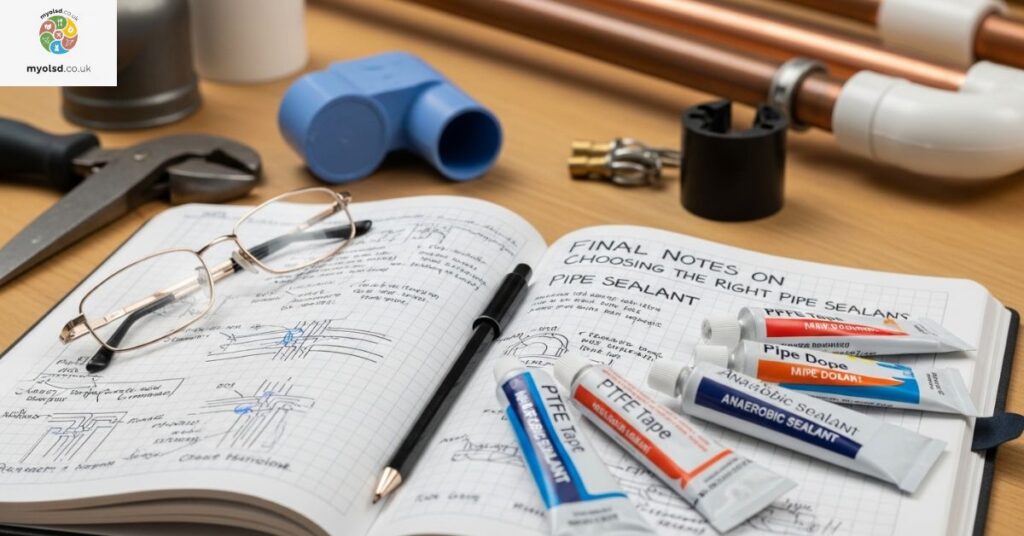
Picking the right sealant means understanding your situation, pipe type, leak severity, and water pressure. While temporary solutions like silicone tape or epoxy putty work fast, permanent repairs often need professional-grade products or plumbing replacement.
If leaks keep returning, it could point to deeper issues such as corrosion, poor installation, or pressure imbalance in your plumbing system.
Importance of Choosing the Right Sealant
A poor sealant choice can lead to water damage, mold growth, or higher water bills over time. The right sealant creates a strong adhesive bond, resists corrosion, and extends your pipe’s durability.
A high-quality waterproof sealant doesn’t just stop leaks; it prevents future ones. Think of it as insurance for your plumbing system.
Factors to Consider
When deciding what is the best sealant for leaking pipes, consider:
- Pipe material (metal, PVC, copper, or plastic)
- Leak location (joint, wall, or underground)
- Water pressure and temperature
- Exposure (indoor vs outdoor)
- Ease of application (DIY or professional use)
Common Causes of PVC Pipe Leaks
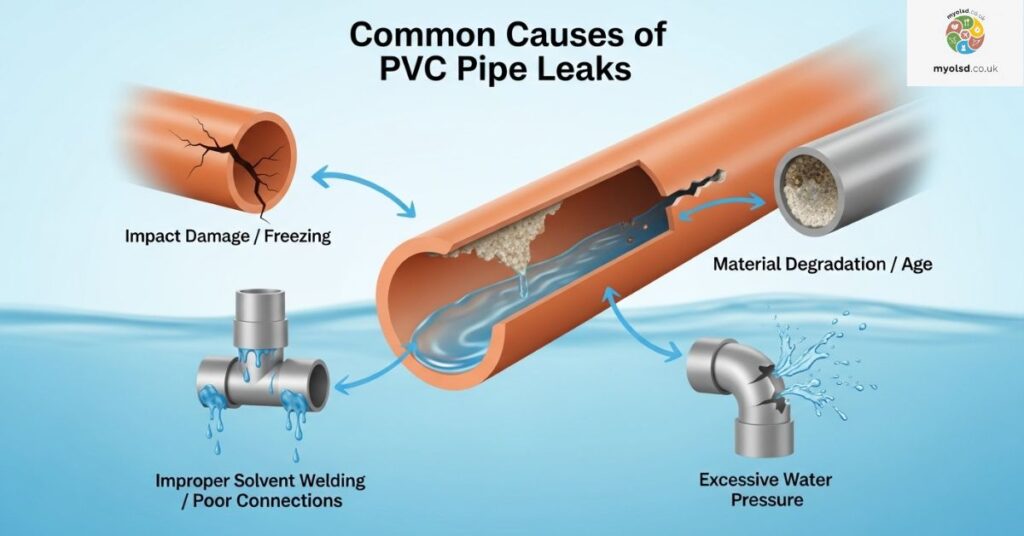
Most PVC leaks happen due to improper installation, poor bonding, or aging materials. Sometimes, temperature changes or chemical corrosion cause cracks. Regular pipe inspection and maintenance can prevent these leaks early.
Identifying Vulnerabilities
Before sealing, check for weak spots, look for discoloration, condensation, or soft areas along the pipe. These indicate hidden damage or leaks forming inside joints.
Understanding PVC Sealant Types
PVC sealants come in three main types:
- Solvent-based sealants — chemically bond with PVC for a permanent fix.
- Water-based sealants — safer and eco-friendly, great for indoor use.
- Epoxy compounds — create a hard, waterproof surface for heavy-duty repairs.
Evaluating the Best Sealants in the Market
When comparing brands, focus on curing time, pressure resistance, and chemical durability. Top-rated brands like J-B Weld, Rectorseal, and Proxicast stand out for their long-lasting waterproof results.
DIY Tips for Applying PVC Sealant
Step-by-Step Guide
- Turn off the water supply.
- Clean the pipe using sandpaper or a dry cloth.
- Apply the sealant evenly using a brush or applicator.
- Let it cure fully, usually 1 to 24 hours, depending on the product.
- Test for leaks before resuming normal use.
Read more Article: Best Time to Cruise Mexican Riviera
What Is the Best Sealant for a Leaking PVC Pipe?
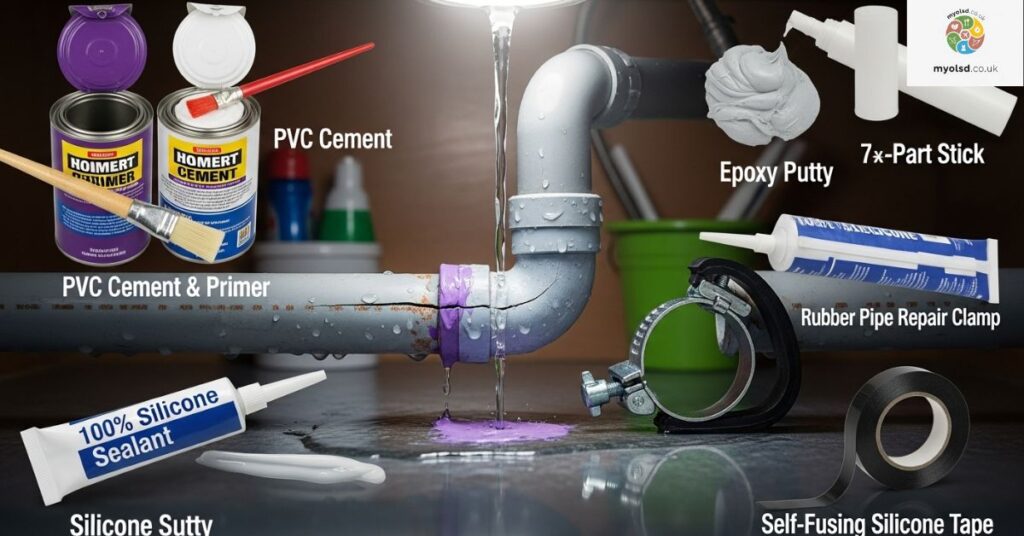
The best sealant depends on your specific issue. For small cracks, epoxy putty or PVC cement works great. For threaded joints, use Teflon tape or pipe thread sealant. For flexible or outdoor areas, go with self-fusing silicone tape.
Factors Influencing the Choice
- Temperature resistance
- Pipe age and condition
- Environmental exposure
- Desired lifespan of the repair
Pros and Cons of Top Sealants
| Sealant Type | Pros | Cons |
| Epoxy Putty | Long-lasting, handles pressure | Hardens quickly, limited flexibility |
| Silicone Tape | Easy, no mess | Temporary fix only |
| Thread Sealant | Ideal for joints | Not for large cracks |
| PVC Cement | Permanent chemical bond | Only for PVC |
Real User Experiences
Most homeowners report that epoxy-based sealants work best for lasting repairs, while silicone tape is loved for quick emergency fixes. Professional plumbers often recommend Rectorseal T Plus 2 for joint sealing because it’s reliable and easy to apply.
Common Issues That Lead to PVC Pipe Leaks
1. Improper Installation
Incorrect joining or not cleaning surfaces before sealing leads to weak bonds.
2. High Water Pressure
Excess pressure stresses joints, causing cracks or bursts.
3. Temperature Fluctuations
Pipes expand and contract, which can break seals over time.
4. Physical Damages
External force, such as drilling or heavy objects, can crack pipes.
5. Chemical Damage
Harsh cleaning agents corrode or weaken PVC over time.
Read more Article: Best Time to Cruise Mexican Riviera
7 Effective Ways to Fix a Leaking PVC Pipe
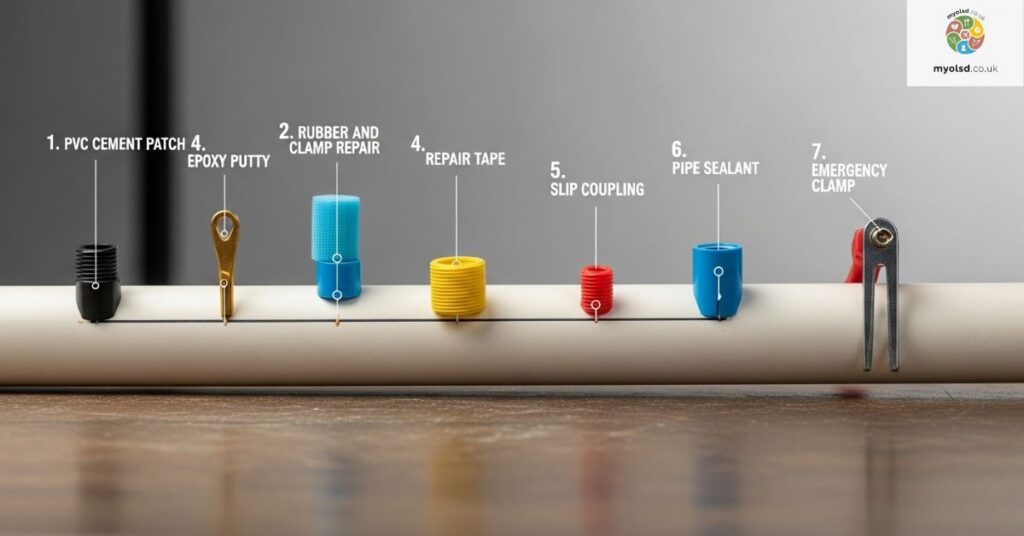
1. Use Epoxy
Epoxy forms a solid, waterproof bond ideal for cracks and pinholes.
2. Apply PVC Pipe Sealant Tape
This self-fusing silicone tape is perfect for temporary containment.
3. Use a Rubber and Hose Clamp Patch
Tighten a piece of rubber with clamps for quick, emergency repair.
4. Use a Pipe Repair Clamp
A metal repair clamp works for larger leaks under pressure.
5. Use a PVC Pipe Repair Sleeve
This permanent solution reinforces damaged sections.
6. Pipe Relining
For underground or inaccessible pipes, pipe relining creates a new interior lining without replacement.
How to Maintain PVC Pipes and Prevent Leaks
1. Inspect Your Pipes Regularly
Spot corrosion or moisture early to prevent big issues.
2. Avoid Using Harsh Chemicals
They cause chemical damage and weaken seals.
3. Don’t Over-Tighten Pipe Connections
Too much force can cause cracks or thread damage.
4. Protect Pipes from Extreme Temperatures
Use insulation to prevent freezing and bursting.
5. Be Careful with Heavy Loads on Pipes
Avoid hanging objects or putting pressure on pipes this causes physical damage.
Final Thoughts
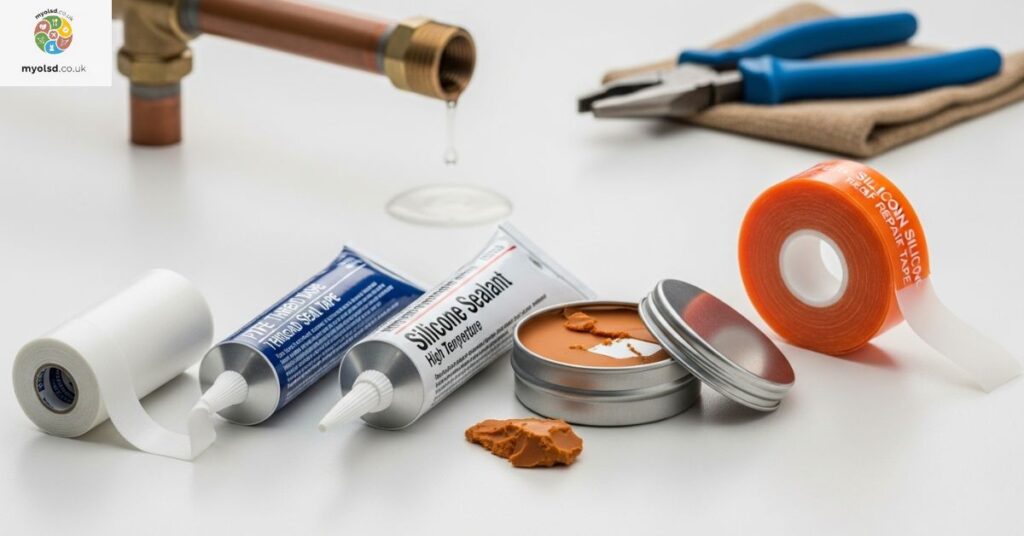
Understanding what is the best sealant is for leaking pipes means knowing your materials, leak type, and repair goal. A quick fix might save time today, but a quality waterproof sealant ensures peace of mind for years.
If in doubt, consult a professional plumber, but with the right knowledge and tools, you can handle most leaks yourself confidently.
FAQs
What do plumbers use to seal pipes?
Plumbers typically use epoxy putty, pipe thread sealant, or Teflon tape to create a watertight seal. The choice depends on the pipe type, pressure, and location of the leak.
Which leak sealer is best?
The best leak sealer depends on the situation. J-B Weld SteelStik epoxy is ideal for metal pipes, while Rectorseal T Plus 2 or silicone tape works great for PVC and threaded joints.
How do you seal a wet, leaking pipe?
For wet leaks, use a self-fusing silicone tape or rubber patch with clamps to stop the flow temporarily. Once dry, apply epoxy putty or a permanent sealant for a lasting fix.
How to permanently fix a leaking pipe?
A permanent repair usually involves epoxy putty or pipe replacement if the damage is severe. Ensure the surface is clean and dry before applying the sealant for the best bond.
Will silicone fix a leaking pipe?
Yes, silicone sealant can fix small leaks and cracks, especially in low-pressure pipes. However, it’s best used as a temporary solution until a more durable repair is made.
How to seal a leaking PVC pipe without cutting?
You can use epoxy putty, waterproof sealant, or silicone repair tape to seal a PVC pipe without cutting it. These materials bond tightly and stop leaks without needing new fittings.

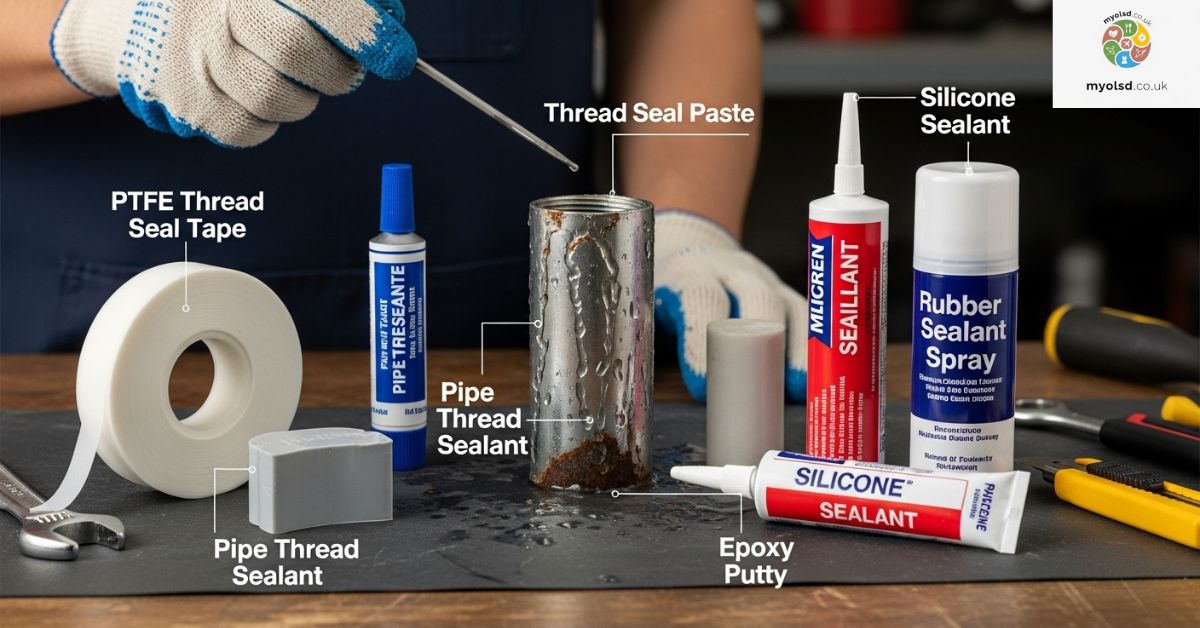
1 thought on “What Is the Best Sealant for Leaking Pipes? (Top Fixes That Actually Work)”